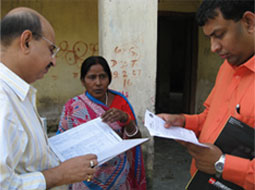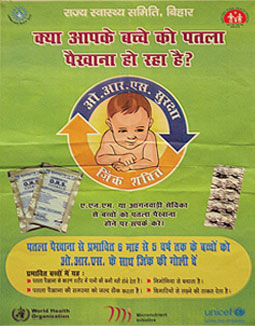Field Stories
Ten must see global nutrition stories from 2023
December 18, 2023
Using zinc to save children’s lives in an emergency setting in India
In October 2008, large parts of the Indian state of Bihar were ravaged by floods due to a breach in the embankments of the Kosi river, affecting more than 4 million people.
Posted on June 21, 2010


Diarrhoea is one of the leading causes of child deaths around the world and children caught in emergencies are even more vulnerable to the disease, with access to clean drinking water scarce, potentially unsanitary conditions and reduced access to health care services.
In October 2008, large parts of the Indian state of Bihar were ravaged by floods due to a breach in the embankments of the Kosi river, affecting more than 4 million people.
As part of its floor relief measures, the state government advanced the next round of vitamin A supplementation to children under the age of five by one month in the flood-affected districts.
“Vitamin A supplementation is a common health intervention during emergencies,” said Dr. Anand Lakshman, MI’s Coordinator Planning and Knowledge Management for the Asia Region.
“We seized the opportunity of the supplementation to promote the use of zinc, along with low-osmolarity oral rehydration salts (ORS) as a treatment for diarrhoea. Using zinc can reduce the incidence of diarrhoea, a major cause of child mortality, by a stunning 27%.”


MI distributed 58,000 Diarrhoea Treatment Kits, including a 10-day course of zinc and two packets of ORS, as part of a special child health package and provided communications materials on the use of these kits to treat children suffering from diarrhoea.
“We hoped that the use of the vitamin A supplementation round, which families are used to participating in twice a year, to promote the use of zinc would add to the concept of the child health package, while using a very cost-effective platform to reach vulnerable populations with the zinc,” explained Dr. Lakshman.
Zinc had never been distributed as part of diarrhoea treatment in the State before but this opportunity demonstrated the possibility of doing this. It also allowed MI to check the effectiveness of using vitamin A supplementation rounds to promote zinc as part of a larger package of health services.
Said Anand: “We are hoping that this experience will to bring about increased use of zinc and ORS in primary health care settings and not just during emergencies.”